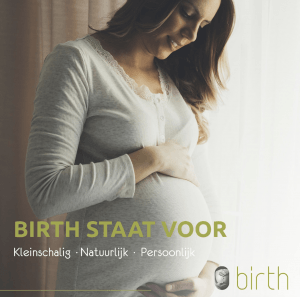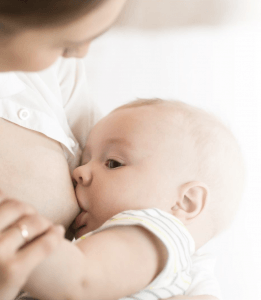Top ten common words during your pregnancy
Terminology during your pregnancy
Becoming pregnant, being pregnant, giving birth and the upcoming parenthood might be challenging if you don’t speak 
Birth Verloskundigen is a small, personal, committed and dedicated midwife practice that delivers a full care model for parents and children. We offer you professional midwifery care from a responsible and efficient perspective by working closely together with other disciplines. We have the possibility to provide you with longer and more frequent checkups than usual in a Dutch practice, so there will be enough time for all your wishes and questions.
During your pregnancy you might be confronted with all kinds of terminology and wordings you never heard before.
As to help you with this terminology, we have selected 10 commonly used words and explained them below.
Breast engorgement or Stowage (Dutch: Stuwing)
Breast engorgement happens commonly in the early days and weeks of breastfeeding. Once your baby is born, your breasts

Breast feeding during pregnancy
get a signal to start full milk production. If your milk production starts after a few days, you may suffer from congestion.Breast engorgement /Stowage can be recognized by warm, painful and / or tense breasts. The reason is, that there is still a kind of disbalance between “demand” of your baby and your breastmilk “supply” on the other side.
Colostrum (Dutch: Colostrum)
Colostrum is the first breast milk that your breasts produce during pregnancy and in the first few days after the birth of a child. This is the first stage of breast milk production. Colostrum is packed with antibodies to optimally protect your baby against infections immediately after birth. Colostrum is also called “gold liquid”.
Dilation (Dutch: Ontsluiting)
Dilation is the phase of labour in which the cervix opens. In most healthy, full-term pregnancies, the cervix remains tightly closed until late in the third trimester. At this point, your baby starts to engage in the pelvis, putting pressure on the cervix and causing it to open up, or dilate, in preparation for labor. Once labor begins, contractions will cause your cervix to dilate fully, allowing your baby to enter the birth canal and, ultimately, be born.Usually, the last centimeters dilations happens faster than at the beginning of delation. Complete dilation is when the dilation is ten centimeters, during the pushing (second stage), the baby can further descend into the birth canal (vagina).
Fundus (Dutch: Fundus)
The upper edge of the Uterus is called the Fundus.During your pregnancy, the growth of your uterus is a good indication of the growth of your baby. When you go for a checkup, your midwife checks how your uterus grows by measuring/feeling the position of the upper edge relative to the pubic bone and the navel. This is called fundus height.
Membrane stripping or membrane sweeping (Dutch: Strippen)
The midwife might “strip” your membranes to increase the chance of giving birth naturally, usually this is done from 41 weeks.Stripping the membranes is a way to induce labor. It involves your midwife sweeping their (gloved) finger between the thin membranes of the amniotic sac in your uterus. First, she will feel through internal vaginal examination whether the cervix is already flexible and whether there is already dilation. If that is the case, your membranes can be stripped. This releases hormones (prostaglandins) that can start the birth.
Neonate (Dutch: Neonaat)
A Neonate is the term used for a newborn baby aged between 1 and 28 days.
Placenta (Dutch: Placenta)
The placenta (also known as the afterbirth or mother’s cake) is a very important organ, it ensures that the pregnancy remains instant and supplies your baby with nutrition and oxygen. After the birth of your child, the placenta has yet to come. The uterus needs to contract to release the placenta from the uterine wall. The obstetrician or midwife checks whether the placenta is loose, if that is the case, you are asked to press again so that it is born. The placenta, membranes and umbilical cord are always carefully checked to see if they are complete.
Pushing (Dutch: Uitdrijving)
After the Dilation phase, the next stage starts: the expulsion.During the expulsion stage, contractions reach maximum intensity and push the fetus out of the uterus, through the cervix, and down the birth canal. Delivery, or birth of the fetus, is the arrival of the fetus into the outside world.
 Oxytocin (Dutch: Oxytocine)
Oxytocin (Dutch: Oxytocine)
Oxytocin is known as the “cuddle hormone,” but that simplistic moniker glosses over the complex role this hormone plays in social interactions and bonding.Oxytocin plays a major role before, during and after your pregnancy. It is produced by a small part of your brain, called hypothalamus. It causes fertilization, the contractions during birth, and milk production after birth. After the birth, your hormone balance changes permanently. Women who gave birth have higher oxytocin levels, compared to other women. This helps forming a good relationship between you and your baby.
Vaginal Examination (Dutch: Toucheren)
Vaginal examination is the internal examination that is done by the midwife, when the delivery has (probably) started. He or she puts two fingers in your vagina to check whether the cervix has already softened and to see how far the disclosure has progressed.Midwifes gauge cervical dilation by feeling the cervical opening with two fingers. They place their two fingers on either side of the cervical opening and estimate how far apart their fingers are. They can’t see the cervix itself during the exam since the cervix is located at the back of the vagina.
Birth Verloskundigen
Birth Verloskundigen is a small, personal, committed and dedicated midwife practice that delivers a full care model for parents and child. We offer you professional midwifery care from a responsible and efficient perspective by working closely together with other disciplines. We have the possibility to provide you with longer and more frequent checkups than usual in a Dutch practice. By doing this, there will be enough time for all your wishes and questions.
Therefore, we provide you with an English, German, French or Arabic speaking midwife, flexible consultation hours, ultrasounds, home visits, continuous monitoring during the pregnancy. We provide delivery at home and in the hospital, cooperation with the gynecologists in the region. All midwives are registered in the quality register for midwives. We have contracts with all major healthcare insurance companies, post-natal care, preconception consultation and birth control consultation.
Because it is not about us, but about you. It’s about your pregnancy, you are giving birth and it’s your child. We inform, facilitate and check.
You are welcome for a free consultation at our practice in Stadshagen Zwolle, or we can visit you on-site.
Are you interested or do you have any questions? Please contact us by sending an email to info@birth-verloskundigen.nl or call us at +31 6 15 15 80 52.
Hopefully see you seen!
Birth Verloskundigen
www: www.birth-verloskundigen.nl
email: info@birth-verloskundigen.nl
10 veelvoorkomende woorden tijdens de zwangerschap 🤰Tijdens de zwangerschap en de bevalling komen er veel woorden…
Gepostet von birth-verloskundigen am Dienstag, 12. November 2019



